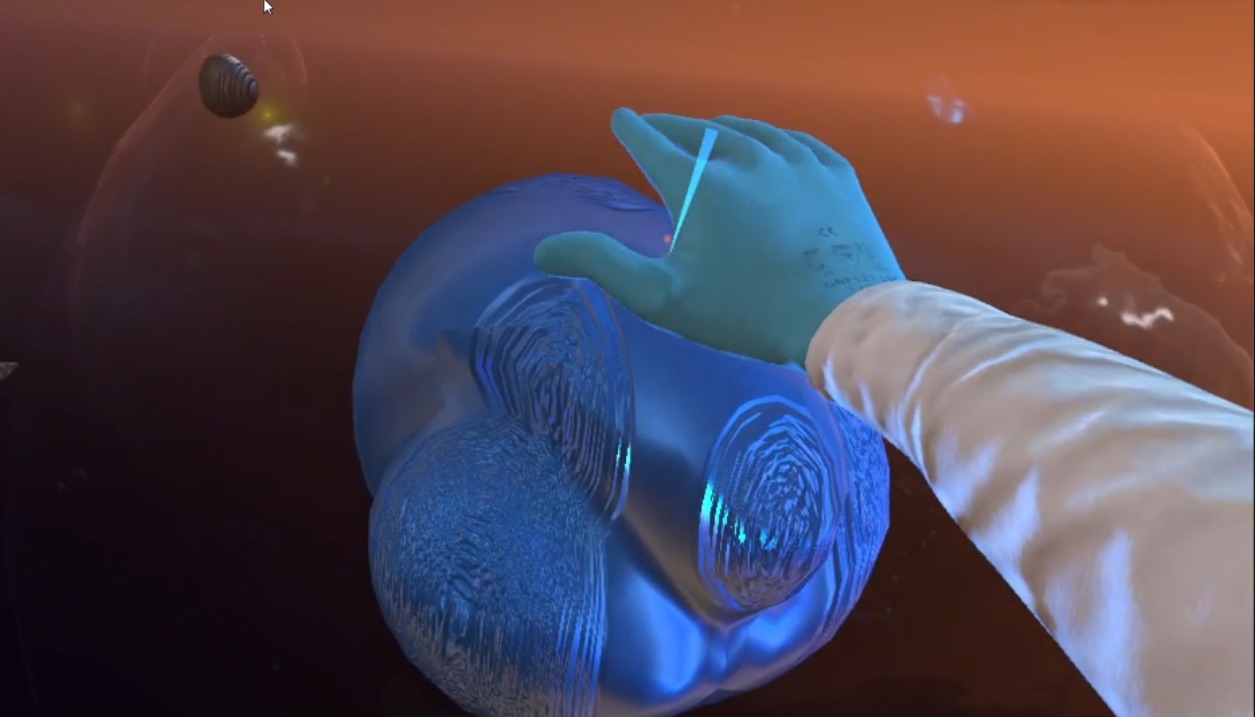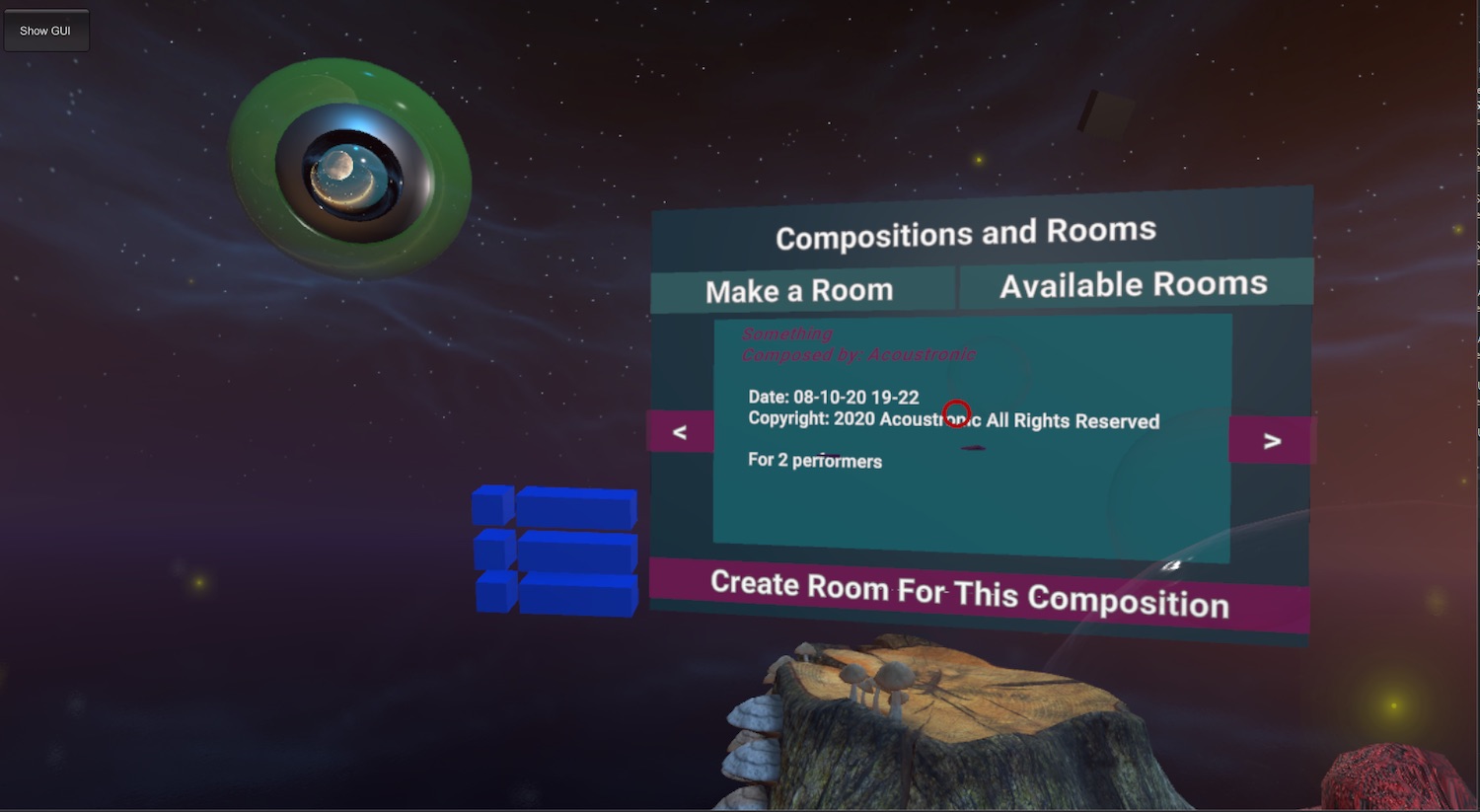Poster
Poster
Overcoming Barriers to Social and Hierarchical Places Through the Design of Immersive Composition and Performance Software
It has been argued that disability is socio-spatially constructed. The spaces we inhabit carry messages about who we are and who belongs within those spaces. People with disabilities are not only excluded from social spaces but often segregated within those spaces. [1] Social spaces, such as those where music happens are an important part of social inclusion. Through exclusion and segregation, we communicate to people the place in which they belong.
Musicians position themselves within hierarchical places. An example of this hierarchy within Western music are the roles Composer – Conductor – Performer. With the development of Accessible Digital Music Interfaces (ADMI) we see musicians with disabilities take up the role of Performer. In fact, ADMIs within the literature are, almost, exclusively built for performance [3]. ADMIs for composition and conducting are missing. This could contribute to disabled musicians being included but segregated to their accepted place of Performer.
The importance of social spaces and their acoustic qualities can be seen in the music of western composers such as Bach. His St Matthew’s Passion composed for the Thomaskirche for example [2]. For performers, these social spaces can represent an important achievement in a long process of practise and exploration.
Here, we describe an immersive performance and composition system designed with musicians from Derry/Londonderry who identify as being either physically or intellectually disabled. Using participatory design methodologies, participants have contributed throughout the design process [4]. Using the resulting software these musicians compose using sound, space, 3D objects and materials. They experience their compositions in a networked virtual space of the composer’s choosing using multimodal interactions [5] to conduct and perform. Paul Hunt’s original suggestion of the Social Model of Disability asked ‘that disabled people should, with the advice and help of others, assume control […]’, [6]. We believe we have created a VR place where musicians with disabilities take control and where hierarchical mobility is achieved.
References
[1] R. O. B. Kitchin, “‘Out of Place’ , ‘Knowing One’s Place’: space, power and the exclusion of disabled people,” Disabil. Soc., vol. 13, pp. 343–356, 1998.
[2] B. Blesser and L.-R. Salter, Spaces Speak, Are You Listening? : Experiencing Aural Architecture. MIT Press, 2006.
[3] E. Frid, “Accessible digital musical instruments—A review of musical interfaces in inclusive music practice,” Multimodal Technol. Interact., vol. 3, no. 3, 2019, doi: 10.3390/mti3030057.
[4] E. B. N. Sanders, E. Brandt, and T. Binder, “A framework for organizing the tools and techniques of Participatory Design,” ACM Int. Conf. Proceeding Ser., no. April 2016, pp. 195–198, 2010, doi: 10.1145/1900441.1900476.
[5] Z. Obrenovic, J. Abascal, and D. Starcevic, “Universal accessibility as a multimodal design issue,” Commun. ACM, vol. 50, no. 5, pp. 83–88, 2007, doi: 10.1145/1230819.1241668.
[6] UPIAS and DAU, “The Union of the Physically Impaired Against Segregation and The Disability Alliance discuss Fundamental Principles of Disability,” p. 24, 1976.

Lewis Smith
Ulster University
Biography−
I am a PhD candidate, composer, saxophonist, clarinettist and programmer currently developing a package of software with disabled musicians using immersive technology and participatory design methods.
For almost 30 years I have been a professional musician performing for television, radio, at international music festivals across Europe, Central Asia and on the Irish jazz scene. During those years I composed works for jazz ensemble, and, of note, works for a sextet called Alty based on my research of Kazakh traditional music while in Kazakhstan.
Having returned to academia I have focused my compositional and technological expertise on inclusive arts, composing three works. One work for string quartet and electronics, one for jazz quartet and electronics and one VR composition for VR and electronics for the Open Youth Orchestra of Ireland. A project where I was technical lead and led to the foundation of three new inclusive ensembles around Ireland.
Overcoming Barriers to Social and Hierarchical Places Through the Design of Immersive Composition and Performance Software
Gallery





Compose With Feel demo
Composing with Space in With Feel VR
Conducting in With Feel VR
